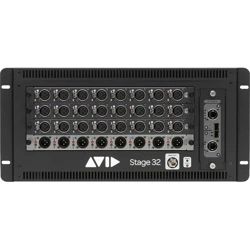Loading ...
Loading ...
Loading ...

Snapshots 233
Importing Snapshots
Snapshots from other Show files can be imported into the currently loaded Show file in the Filing > Load/Save tabs.
For more information, see
Import Snapshots and Events.
Making Changes to Snapshots
There may be situations where you need to change specific parameters in existing snapshots while leaving other parameters un-
changed.
For example, if a guitarist changes instruments in the middle of a tour it might be necessary to change levels and EQ on the guitar
channel in all the snapshots in a show. Snapshots provides the following modes to accommodate these types of situations:
Edit Mode
Lets you capture individual control changes while you mix, and apply those changes to one or more pre-existing snap-
shots as absolute or relative changes. For example, you could enter Edit mode the first time a guitarist uses a new guitar in rehearsal.
When you are satisfied with your settings you can apply them (in absolute or relative fashion) to update other snapshots. See Using
Edit Mode.
Update Mode
Lets you update data in pre-existing snapshots after you've already made changes and decided you want to keep
them. While Edit mode requires you to know ahead of time that you will be updating snapshots, Update mode lets you decide to
update other snapshots with current settings after making adjustments to your mix. For example, if its the third consecutive night
you’ve reached to increase gain on the DI channel for a new guitar, you could use Update mode to quickly take the gain increase
you just made and apply it to other snapshots. See
Using Update Mode.
Using Edit Mode
Edit mode is a powerful way to update specific parameters across multiple snapshots without overwriting any settings you want to
preserve. By entering Edit mode before making adjustments, you can edit a single control or any number of controls, and your
changes are tracked from the point Edit mode was entered.
Absolute and Relative Edits
Changes can be applied to one or more selected snapshots as absolute or relative values. Any parameter can be edited in absolute
fashion; all dB parameters can be edited in relative fashion.
Examples of Absolute and Relative Edits
Absolute
Changing a fader level from 0 dB to –3 dB and applying that change as Absolute results in that fader being set identically
to –3 dB in all selected snapshots.
Relative
Changing a fader level from 0 to –3 dB and applying that change as Relative results in that fader being reduced by that
amount in all selected snapshots, or 3 dB relative to the value previously stored in the snapshot(s). For example, a channel previ-
ously at –6 dB would be changed to –9 dB.
Making Relative Changes with Mixed Data Types
If a combination of dB and non-dB parameters (such as gain and EQ frequency) are edited and applied in relative fashion, the dB
parameters are adjusted as relative (delta) changes and the non-dB are applied as absolute changes.
In VENUE software versions 5.6 and lower, Import Snapshots was available via right-click. Beginning in VENUE software
version 5.7, use the Import button instead.
Events-driven recall of snapshots is disabled while in Edit or Update mode. For more information, see
Events.
The ability to edit a single control in Edit mode provides more selectivity than Update mode.
Loading ...
Loading ...
Loading ...
